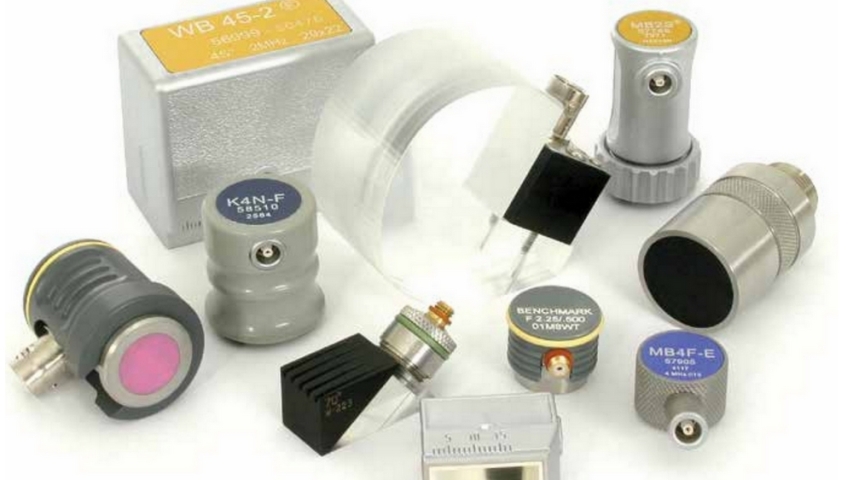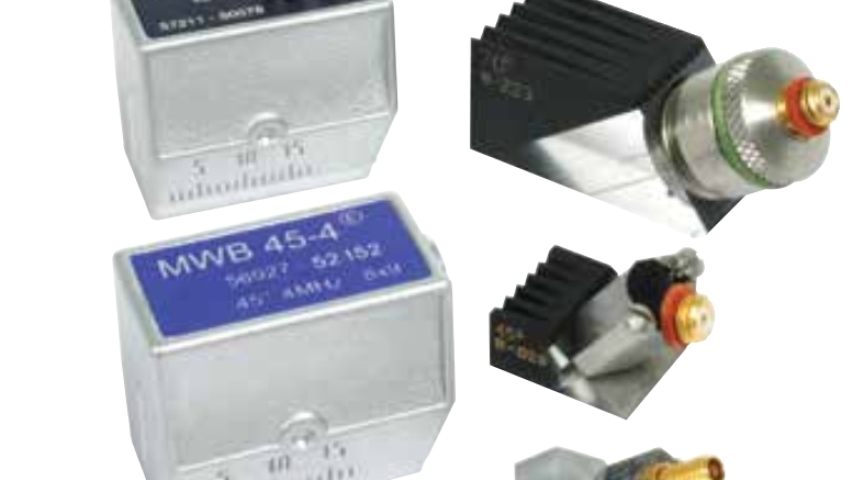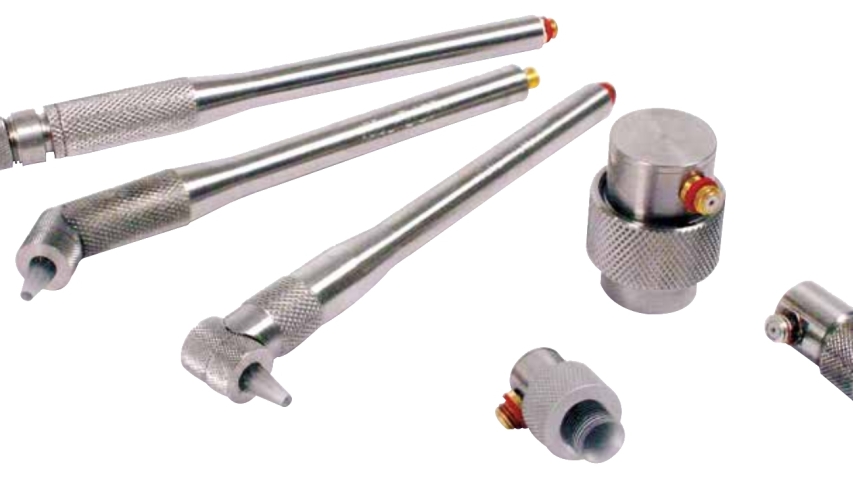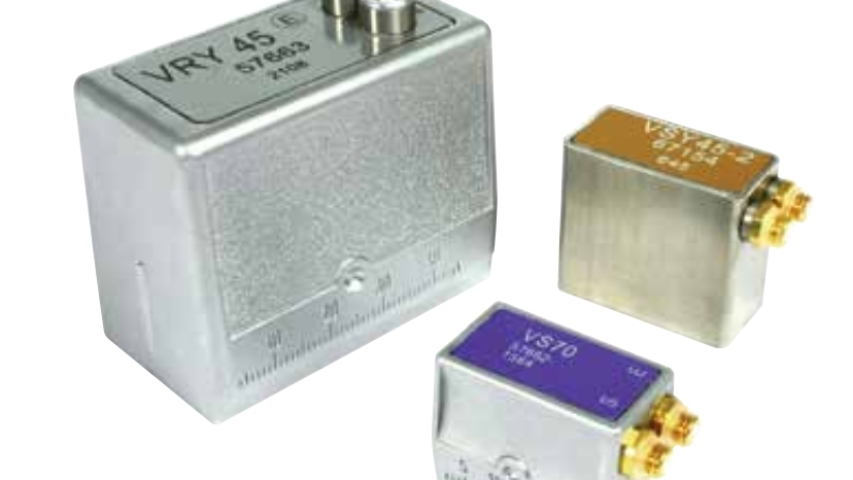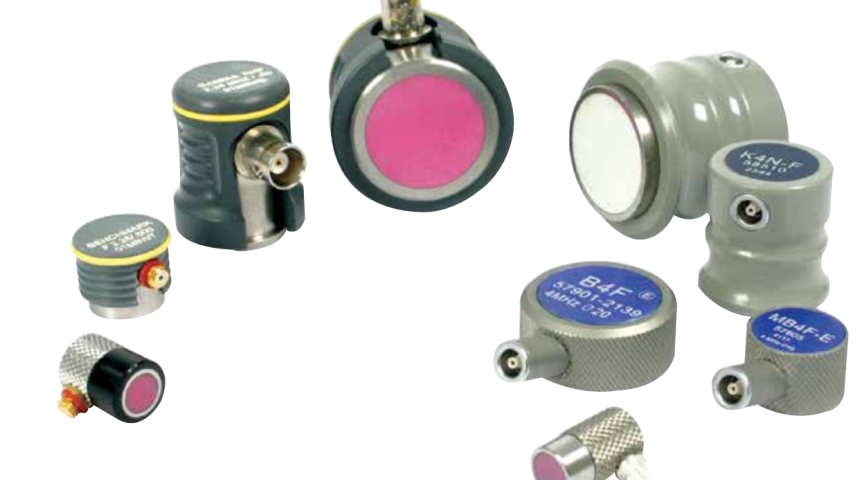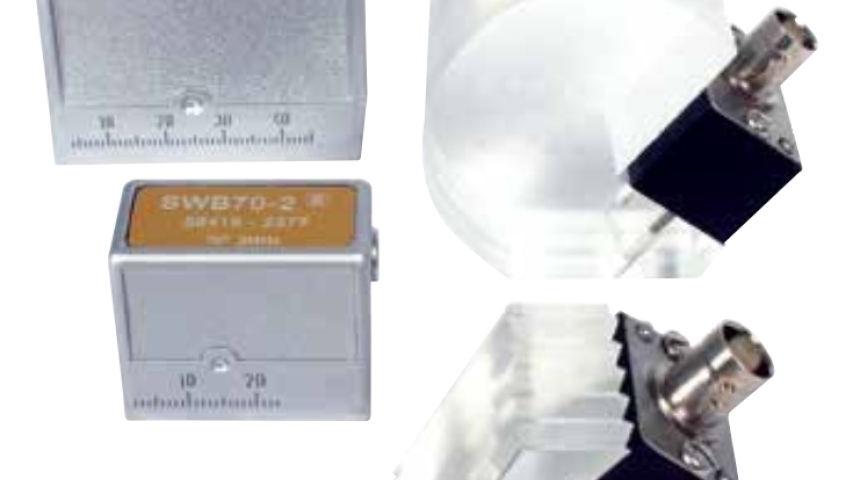Probes for flaw detection and ultrasonic measurement
A very wide range of probes for all types of ultrasonic inspections
The ultrasonic transducers in our catalogue are divided into two general categories: contact transducers and immersion transducers.
Spécifications
Translators for the contact inspection method
Straight beam-Single element
- Parts with regular geometry and relatively smooth contact surface
- Flat or curved contact surface
- Defect or background parallel to the surface or detectable with beam normal to the surface
- More suitable for penetrating thick sections
- Delay line designs improve near surface resolution
- Requires a coating layer, usually a gel, oil or paste
- Commonly used for manual inspection
Straight beam-Dual element (TR)
- Transmitter and receiver separated by crosstalk barrier
- Defect or background parallel or not to the surface or detectable with beam normal to the surface
- Ideal for thin sections, good near-surface resolution
- Requires a coating layer, usually a gel, oil or paste
- Commonly used for manual inspection
Angular beam
- Element-mounted or integral or interchangeable shoe
- Uses refraction to transmit a transverse or longitudinal wave at a predetermined angle
- Most standard transducers generate transverse waves by mode conversion
- Best suited to parts with inclined defects, such as welds
- Available in single and dual element models
- Requires a coating, usually a gel, oil or paste
- Sometimes used for mechanised or automated testing
Immersion translators
- Acoustically adapted for optimum efficiency in water
- Suitable for parts with irregular geometries
- Commonly used for mechanised or automated testing
- Optimum method for obtaining high performance coupling and reproducible results
- Large parts can be tested using translator holders, bubblers or water jets
- Translators can be focused to improve results
Focused immersion translators
- A spherical focus forms a focal point or focal spot
- A cylindrical focus forms a line
- Advantages of focusing
- Increases sensitivity to small defects
- Improves signal-to-noise ratio
- Improves near-surface resolution
- Good results on curved surfaces






